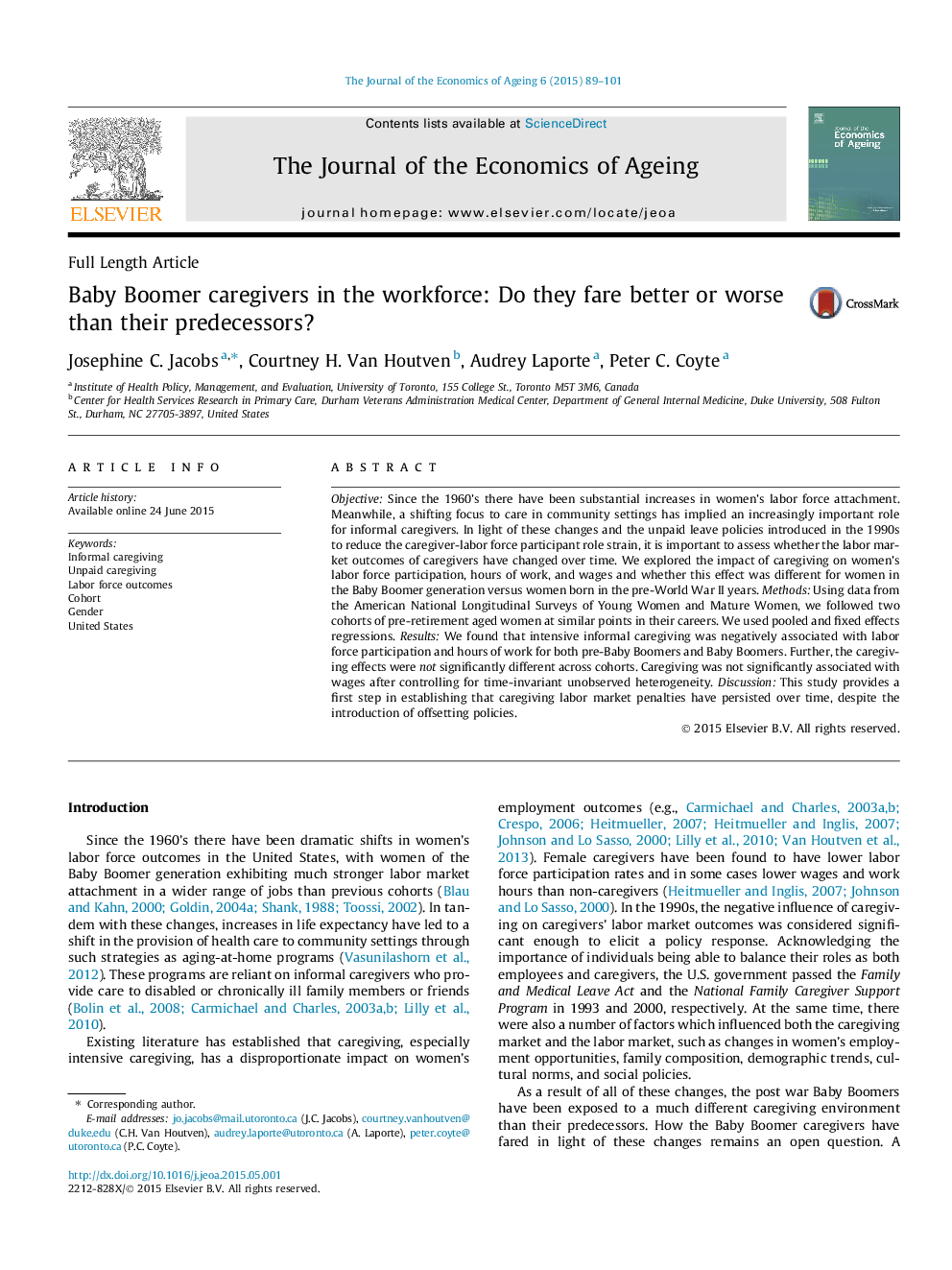| Article ID | Journal | Published Year | Pages | File Type |
|---|---|---|---|---|
| 7360043 | The Journal of the Economics of Ageing | 2015 | 13 Pages |
Abstract
Objective: Since the 1960's there have been substantial increases in women's labor force attachment. Meanwhile, a shifting focus to care in community settings has implied an increasingly important role for informal caregivers. In light of these changes and the unpaid leave policies introduced in the 1990s to reduce the caregiver-labor force participant role strain, it is important to assess whether the labor market outcomes of caregivers have changed over time. We explored the impact of caregiving on women's labor force participation, hours of work, and wages and whether this effect was different for women in the Baby Boomer generation versus women born in the pre-World War II years. Methods: Using data from the American National Longitudinal Surveys of Young Women and Mature Women, we followed two cohorts of pre-retirement aged women at similar points in their careers. We used pooled and fixed effects regressions. Results: We found that intensive informal caregiving was negatively associated with labor force participation and hours of work for both pre-Baby Boomers and Baby Boomers. Further, the caregiving effects were not significantly different across cohorts. Caregiving was not significantly associated with wages after controlling for time-invariant unobserved heterogeneity. Discussion: This study provides a first step in establishing that caregiving labor market penalties have persisted over time, despite the introduction of offsetting policies.
Related Topics
Social Sciences and Humanities
Economics, Econometrics and Finance
Economics and Econometrics
Authors
Josephine C. Jacobs, Courtney H. Van Houtven, Audrey Laporte, Peter C. Coyte,
